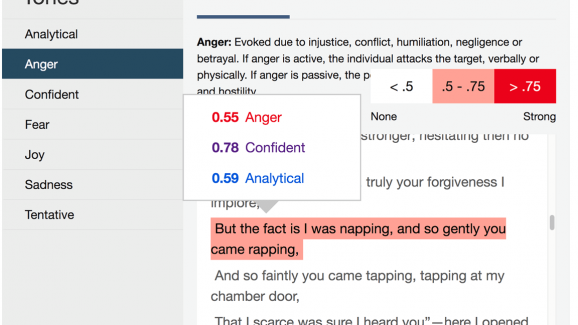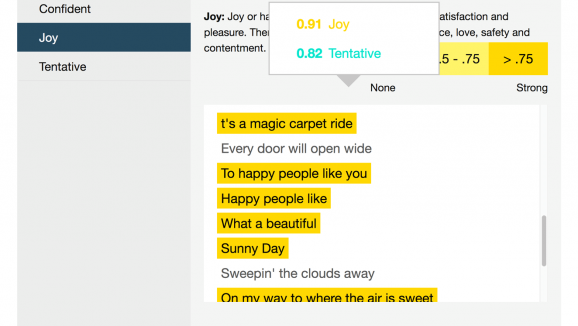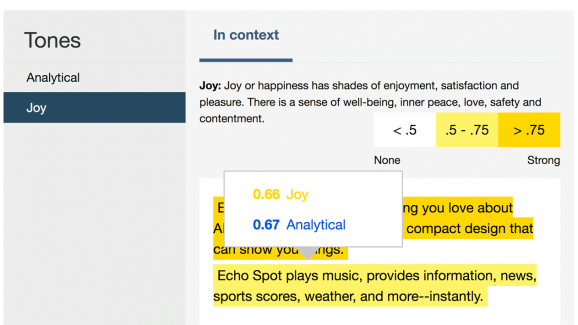
Can Artificial Intelligence Write Effective Marketing Content?
Time to read: 4 Minutes
Compelling marketing blogs and content that inspires action, at its deepest root, is emotionally-driven. You read about a new app, imagine how easy it will make your task, and you’re excited. Or you’re buying a security service and that nagging fear gives way to peace of mind once you start learning more. The first step for you the buyer is marketing content. So the big question: how does artificial intelligence write effective marketing content?
Other questions come to mind:
How can artificial intelligence, or AI, write content that makes us feel and then buy? Will artificial intelligence turn human content marketers into dinosaurs?
So, let’s go back to feelings.
Effective Marketing Content Taps into Social Media’s Emotions
Of course, feelings are individual. Not everyone feels the same way about the same thing. Not everyone has the same set of needs, even though they may buy the same product. This is why marketing uses personalization.
Social media arguably does this, capturing changes in emotion in the process.
So social media data flows can help artificial intelligence write effective marketing content.
Social Media Data Fuels AI and Machine Learning in Marketing
Yet, artificial intelligence (AI) needs enormous quantities of high quality data to train effective models. To understand the size and the challenge of high quality data, let’s take the example of Twitter.
In 2009, Stanford researchers collected the well-known Stanford Twitter Sentiment (STS) test data set. On January 1, 2009, on average, there were 2.5 million Tweets per day 2009 and 35 million/day a year later in 2010. So let’s say there were about 10 million Tweets per day (source: Internet Live Stats). Over a 47 day period, this means about 50 million Tweets.
Most Tweets Don’t Contain Emotion
So how many Tweets contain emotion anyway? The vast majority don’t, so the task for AI researchers is to get to those Tweets that do. But how common are emotions in Tweets?
There are some clues in the creation of the STS data set. Researchers used the Twitter API to scrape every Tweet containing emoticons. Every 2 minutes for 47 days, they grabbed every Tweet with an emoticon.
Then researchers proceeded to clean data to remove neutral or emotionless Tweets. They also removed emoticons from remaining Tweets. This is because the emoticon itself didn’t always align with the emoticon sentiment. In other words, people use them as irony, as well.
Machine Learning Algorithms Need Balance
It’s important to remember that machine learning algorithms need balance. Stanford researchers correctly classified nearly 80% of Tweets, but such balance does not exist in the real world. Researchers kept 800,000 positive Tweets and then the first 800,000 negative Tweets. All total, the training data set contains 1.6 million Tweets. Out of 50 million, about 3.2% of estimated number of Tweets was suitable.
Also, the data set’s Tweets don’t tell mood or personality. Instead, they reflect negative or positive feelings. Again, it’s not real world.
Machine Learning Data Requires A Lot of Cleaning
The key takeaway: It took a lot of data to cull the high quality data – to get to negative or positive.
Fast forward to today. Training data sets know have neutral points,that is more real world. This somewhat helps artificial intelligence write effective marketing content. Of course, there is a cost. And it’s machine learning algorithms ability to correctly classify Tweets. With a neutral point, it classifies Tweets correctly about 50% to 60% of the time.
So it makes machine learning in the Twitter sphere valuable for customer engagement. Twitter data is also great for managing customer’s problems. But, Twitter may not be the best data source to cover the human emotion range.
Machine Learning Gets Emotional
Time to check the Tone Analyzer by IBM Watson. It’s machine learning that tries to capture the range of human emotion. It analyzes text and classifies it into 7 emotions:
- Anger
- Fear
- Joy
- Analytical
- Confident
- Tentative and
- Sadness
For our test, use picked 3 items based on its well-established tone. First up, was Edgar Allan Poe’s melancholy poem, The Raven. As you can see, it was way off the mark. Its overall assessment was sad, tentative and joy.[/vc_column_text]

The Tone Analyzer context was way off the mark, too. It completely missed the real meaning and there was nothing confident and analytical about this sentence’s real meaning.
Next was the Sesame Street Theme song. Hum that tune and it’s an instant mood lifter. It’s a happy tune and the Tone Analyzer got it right.

But context is labeled as tentative. What’s with that? It’s probably because of the word “like.” In the song, it’s meant as comparison and to build affiliation.
What does it do with real marketing content? We put Amazon’s Echo Spot description to the test.

Tone Analyzer described it as joy. Which we suppose it is, although, it’s probably not exactly what content marketers had in mind.
Robots Help – Not Replace – Content Marketers
Machine learning can’t create content with all-important emotional hook. Yet, it will be a terrific help to content marketers in other ways. It comes in the form of greater productivity, for artificial intelligence write effective marketing
The type of machine learning is supervised machine learning. So this means a human helps creates models. And the human needs to describe content using all available data. This includes content text, images, creator, personas, buying stage, or metadata. They also need to describe content with outcome metrics. Examples are traffic, time on page, downloads, click-through behaviors, shares, leads, and revenue.
The more data, the better and faster the machine learning model evolves to predict emotion and emotional responses.
When this occurs, machines and AI can write compelling content thereby changing the role of content marketer.
Until then, AI will best help content marketers create better content, and improve its use. Content marketers will no longer have some of the manual drudgery of the job. They can automate content tasks like translating and maintaining it. They’ll be able to deliver next-best personalized content based on search and social behaviors.
Nonetheless, this doesn’t mean content marketers should sit still. They need to keep up with how machine learning is changing the craft. Content marketers must evolve with the technology to be masters of data and of communications, but they won’t be replaced.








